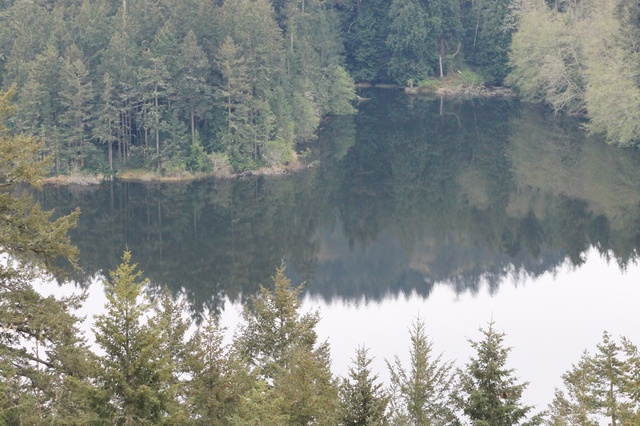The six miles of asbestos concrete water transmission lines carrying potable water from Trout Lake to the Town of Friday Harbor are 60 years old. The standard useful life of this technology is considered to be about 50 years.
“We need to have a reliable water line,” Town Administrator Duncan Wilson told the Journal. “It’s been too long, and we’re trying to be ahead of the game here and do the work before there’s a problem.” The current asbestos concrete pipe will be replaced with top-of-the-line, flexible plastic HDPE piping that can better withstand earthquake shockwaves.
The project will cost about $9.3 million. The Town of Friday Harbor expects to put in $1.5 million, and a U.S. Department of Agriculture’s Rural Development loan will cover the remainder, up to $7.8 million in the form of a 2.875 percent bond with 40-year amortization.
“As we are building it, KeyBank will be loaning us the money on a line of credit basis,” said Wilson. “But as soon as we finish it, then the USDA comes in and pays off KeyBank.” He added, “The longer amortization allows us to lower our annual repayment, and hopefully keep water rates in check.”
Wilson said town residents should expect a “slight modification” of water rates, but there is no immediate raise planned. The town is currently conducting a rate study, taking into account estimated annual repayments of up to $340,000 and looking ahead to further projects needed during the next 15 years. Wilson said the town does need to replenish its funding reserves. Bids for the project are due on April 13. The winning contractor will lay 20,000 linear feet of 14-inch diameter pipe and 6,300 lineal feet of 4-inch diameter pipe. Construction should begin in May and take roughly 18 months. Luckily, Wilson says the industry standard recommendation is to leave old pipe right where it is.
“If it’s buried in the ground, it’s not considered a hazard,” said Wilson. “If we had to pull the old pipe out, this would be a much bigger project.”
Wilson said there is no known health risk from drinking water transported via the existing asbestos concrete pipes. This type of pipe was invented in 1931. “Underground Construction” magazine states that an estimated 12 to 15 percent of the water mains in the United States and Canada are asbestos concrete pipes. Asbestos minerals are simply silicate compounds that occur naturally in the environment, and asbestos is used widely across industries because it is resistant to heat, fire, and chemicals and does not conduct electricity. The Environmental Protection Agency lists asbestos as a regulated drinking water contaminant due to “Increased risk of developing benign intestinal polyps.”
But the World Health Organization says there is no risk, stating, “Although asbestos is a known human carcinogen by the inhalation route, available epidemiological studies do not support the hypothesis that an increased cancer risk is associated with the ingestion of asbestos in drinking-water. There is therefore no consistent, convincing evidence that ingested asbestos is hazardous to health, and it is concluded that there is no need to establish a guideline for asbestos in drinking-water.”
Furthermore the Washington State Department of Health requires water testing for asbestos every nine years. According to Duncan, the town’s last test was in 2008 and the next is scheduled for 2017. The test in 2008 resulted in no detectable asbestos in the samples. The current project was funded not due to any concerns about water quality, but because the pipes are nearing the end of their useful life.
“We have had some failure,” says Wilson, “but generally the [existing] pipes have now reached and exceeded their useful life. We will attempt to get them fixed before we have an earthquake or a major break in the line, to get out ahead of it before we have an emergency. It’s time we put in good quality, state-of-the-art pipeline. We hope this material will last up to 75 years.”
In a separate project, the town also repairing the Trout Lake dam right now, closing up small leaks and cracks in the dam face using a special epoxy. Wilson said these repairs should extend the life of the dam at least another 10 years. The Town of Friday Harbor thanks San Juan County for providing the town access to the county right-of-way under San Juan Valley Road. By routing the new pipe down the road centerline, the town can avoid intruding on both wetlands and private property. Wilson said both entities will save time and funds by working together, as the county is due to chipseal the roadway just after the pipe construction is completed.
“The town will ask for everyone’s patience when driving in the project zone,” Wilson added. “There will be flaggers and you may have to wait for a minute for traffic to go around. This is an important project and we’ll get this done as quickly as we can.”



